
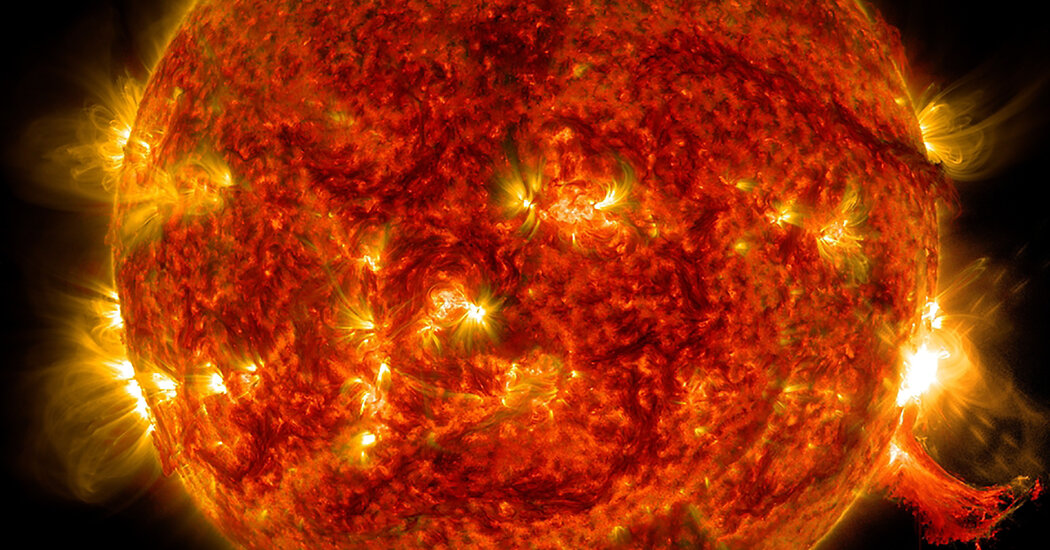
Over the past three years, SpaceX has deployed thousands of satellites into low-Earth orbit as part of its business to beam high-speed internet service from space. But the company’s latest deployment of 49 new satellites after a Feb. 3 launch did not go as planned.
As a consequence of a geomagnetic storm triggered by a recent outburst of the sun, up to 40 of 49 newly launched Starlink satellites have been knocked out of commission. They are in the process of re-entering Earth’s atmosphere, where they will be incinerated.
The incident highlights the hazards faced by numerous companies planning to put tens of thousands of small satellites in orbit to provide internet service from space. And it’s possible that more solar outbursts will knock some of these newly deployed orbital transmitters out of the sky. The sun has an 11-year-long cycle in which it oscillates between hyperactive and quiescent states. Presently, it is ramping up to its peak, which has been forecast to arrive around 2025.
This recent solar paroxysm was relatively moderate by the sun’s standards. “I have every confidence that we’re going to see an extreme event in the next cycle, because that typically is what happens during a solar maximum,” said Hugh Lewis, a space debris expert at the University of Southampton in England. If a milquetoast outburst can knock out 40 Starlink satellites hanging out at low orbital altitudes, a more potent solar scream has the potential to inflict greater harm on the mega-constellations of SpaceX and other companies.
SpaceX announced the looming destruction of as many as 40 of its satellites in a company blog post on Tuesday night. The company said that after the launch, the satellites were released to their intended orbit, about 130 miles above Earth.
This altitude was chosen partly to prevent potential collisions in the future with other satellites. If the satellites malfunction after being deployed at that altitude, and are unable to raise their orbits to more secure heights, “the atmosphere kind of reclaims the failed technology very rapidly,” Dr. Lewis said. “And that’s a very good safety measure.”
But on Jan. 29, before these satellites launched, a violent eruption from the sun of highly energetic particles and magnetism known as a coronal mass ejection was detected. That ejection arrived at Earth sometime around Feb. 2, creating a geomagnetic storm in Earth’s magnetic bubble.
The powerful storm added kinetic energy to particles in Earth’s atmosphere. “The atmosphere kind of puffs up, expands, as a result,” Dr. Lewis said. That expansion causes an increase in the atmosphere’s density, which in turn increases the drag experienced by objects moving through it, including satellites. This drag shrinks the size of their orbits, which draws them closer to the thick, lower atmosphere in which they burn up.
According to SpaceX, during the recent Starlink deployment, “the escalation speed and severity of the storm caused atmospheric drag to increase up to 50 percent higher than during previous launches.” This ensured that as many as 40 of the 49 satellites would eventually succumb to the forces of gravity and perish.
There are currently a total of 1,915 Starlink satellites in orbit, so for SpaceX, a loss of up to 40 “is not a big deal from their point of view,” said Jonathan McDowell, an astronomer at the Harvard and Smithsonian Center for Astrophysics in Cambridge, Mass., who also catalogs and tracks artificial space objects.
But Dr. Lewis said “that probably accounts for potentially up to $100 million of hardware, if you include the cost of the launch.”
The dangers that solar outbursts and geomagnetic storms pose to objects in low-Earth orbit, from electrical damage to communications disruptions, are well known. The National Oceanic and Atmospheric Administration ranks geomagnetic storms on a scale from minor to extreme. The latest, a “moderate” storm, is noted by the agency as possibly causing changes in atmospheric drag that can alter orbits.
With these risks being known, did SpaceX take this hazard into account during this Starlink deployment?
“I’m just kind of dumbfounded,” said Samantha Lawler, an astronomer at the University of Regina in Canada. “Really? They did not think of this?”
“It’s a bit of a surprise,” said Dr. McDowell. “They should have been ready for this, one would have thought.”
When contacted by email, a SpaceX media representative said that no one was available to answer questions, noting that “it’s an incredibly demanding time for the team.”
That these satellites seem to be quickly entering the atmosphere, rather than lingering in low-Earth orbit, is a good thing. They also pose no threat to anyone on the ground. “From a safety perspective, the system functioned exactly as it should have,” Dr. Lewis said. “The satellites de-orbited, and nothing else was put at risk.”
Most satellites orbit at higher altitudes and can avoid the hazards posed by atmospheric expansion. But the threat to satellites orbiting at lower altitudes is far from over, and it leads to the question of whether SpaceX can continue deploying spacecraft at this low altitude.
“As the sun gets more active, it releases an increasing amount of extreme ultraviolet, which gets absorbed into our atmosphere,” Dr. Lewis said. That atmosphere will expand significantly, and “the expectation is that the atmospheric density is going to increase by one or two orders of magnitude. That’s a way bigger change compared to what we’ve just seen with this particular event.”
Many astronomers have been critical of Starlink and other satellite constellations, which reflect sunlight and will potentially interfere with telescope research on Earth. And some see this incident as emblematic of SpaceX’s attitude toward problems occurring in low-Earth orbit.
“If things fail, they fix them and do things better next time,” Dr. Lewis said. “This is another example of that” — a policy of adherence to hindsight, not foresight.
The death of these satellites is “a harsh lesson for SpaceX,” Dr. Lewis said. What happens next is up to them.
Dr. Lawler added, “I hope this will knock a little bit of sense into them.”
24World Media does not take any responsibility of the information you see on this page. The content this page contains is from independent third-party content provider. If you have any concerns regarding the content, please free to write us here: contact@24worldmedia.com

Common Mistakes When Using Athletic Field Tarps

High-Performance Diesel Truck Upgrades You Should Consider

Warehouse Optimization Tips To Improve Performance
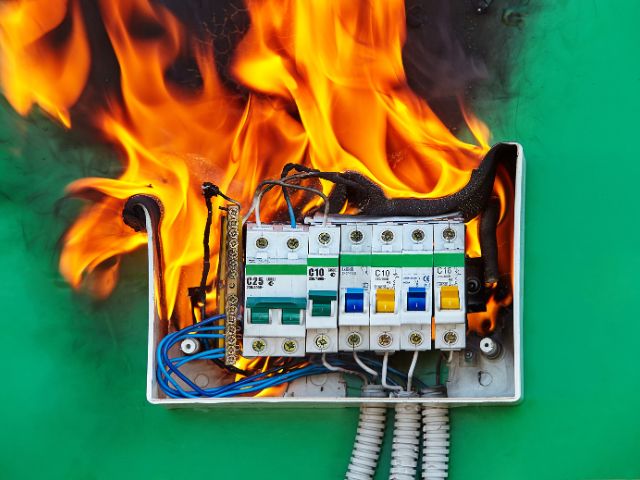
Fire Hazards in Daily Life: The Most Common Ignition Sources

Yellowstone’s Wolves: A Debate Over Their Role in the Park’s Ecosystem
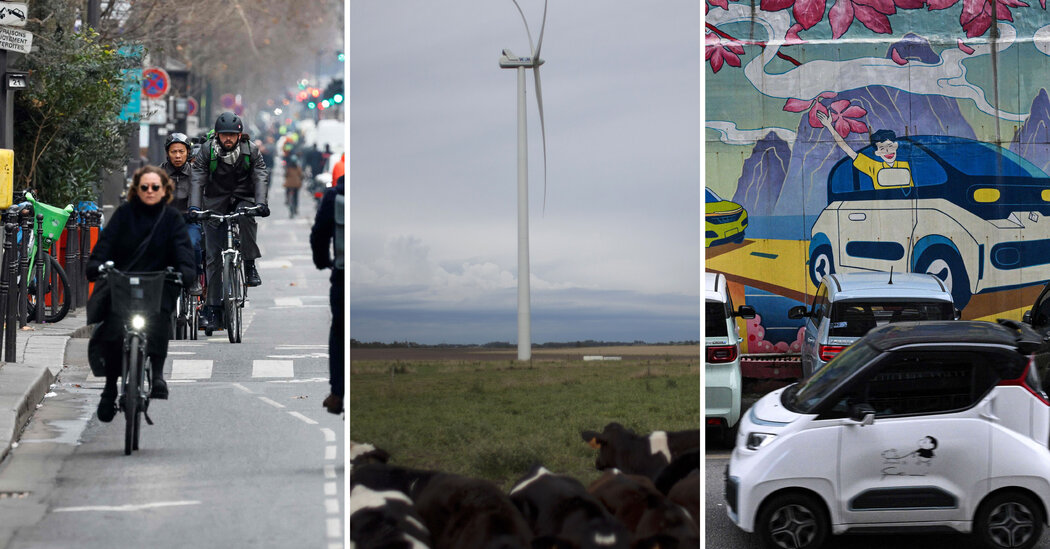
Earth Day 2024: A Look at 3 Places Adapting Quickly to Fight Climate Change

Millions of Girls in Africa Will Miss HPV Shots After Merck Production Problem
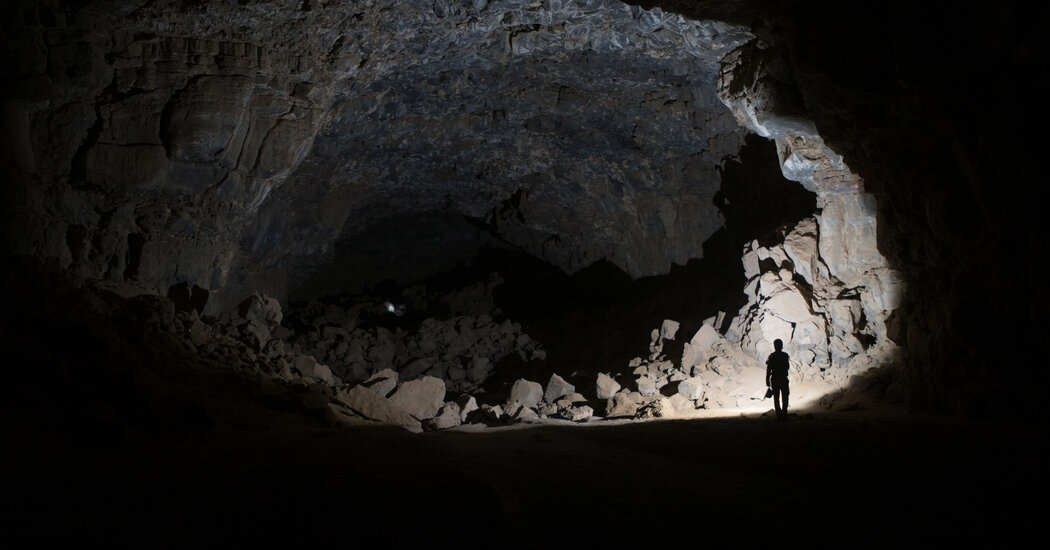
This Lava Tube in Saudi Arabia Has Been a Human Refuge for 7,000 Years
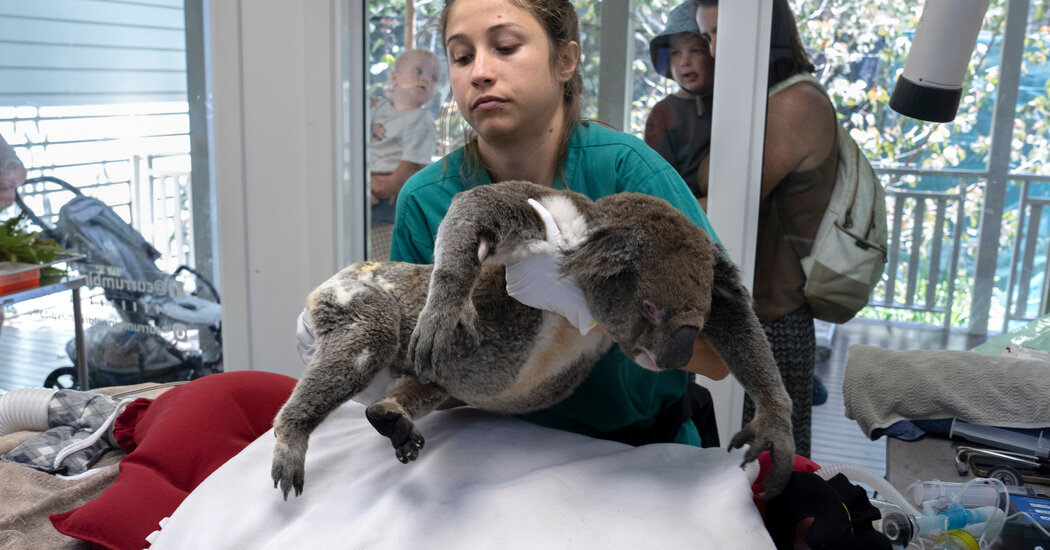
Four Wild Ways to Save the Koala (That Just Might Work)
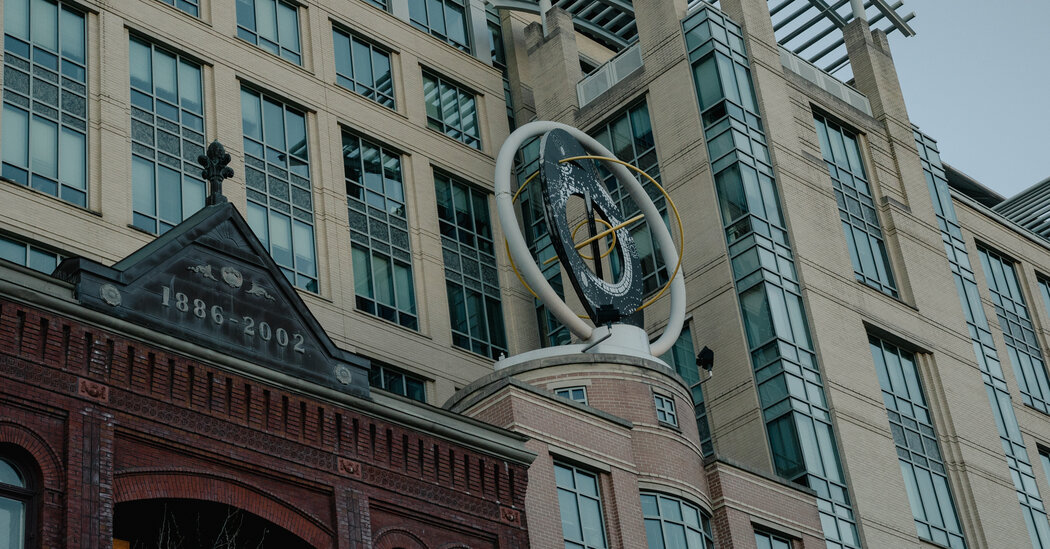
National Academy Asks Court to Strip Sackler Name From Endowment
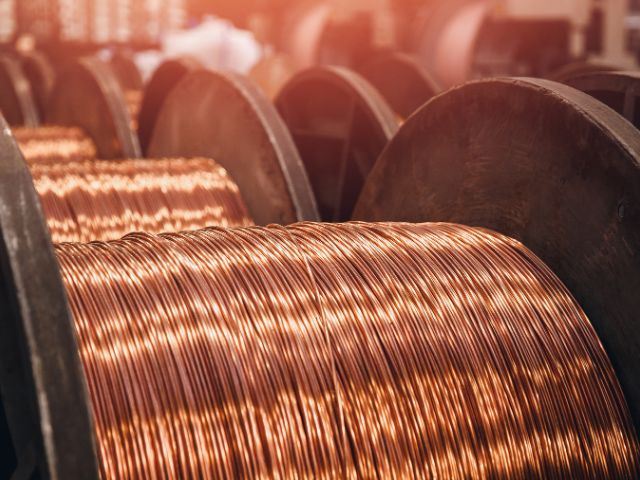
Ways Industrial Copper Helps Energy Production
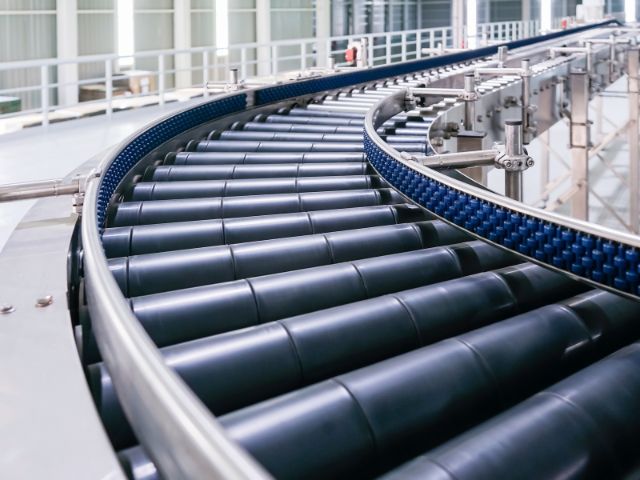
The Ins and Out of Industrial Conveyor Belts